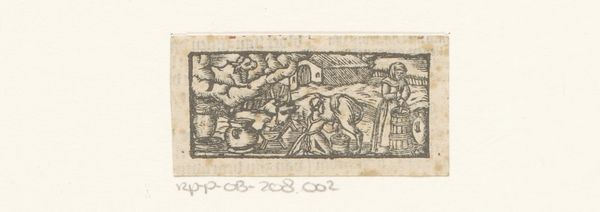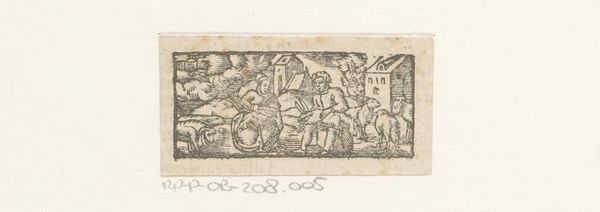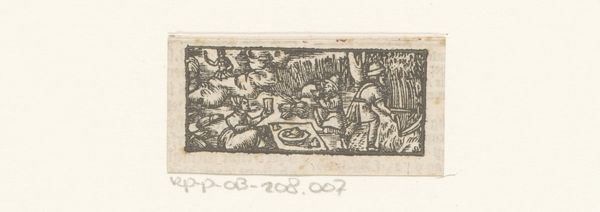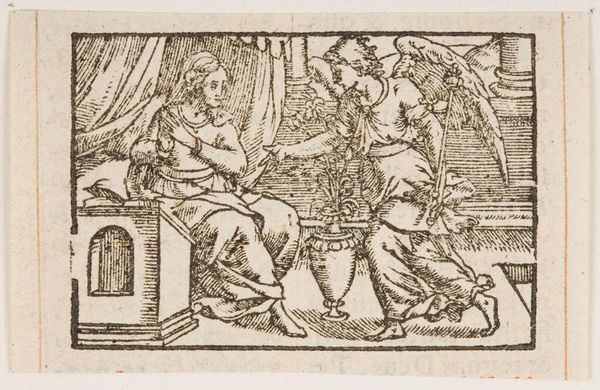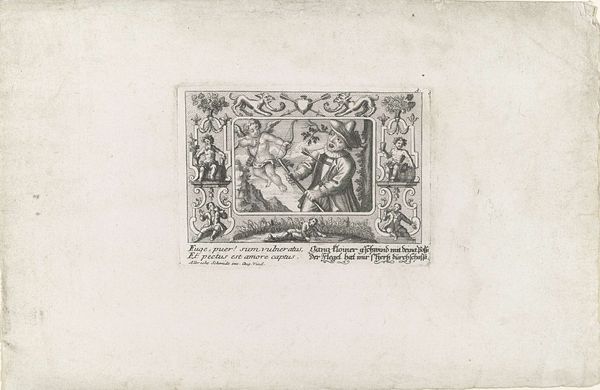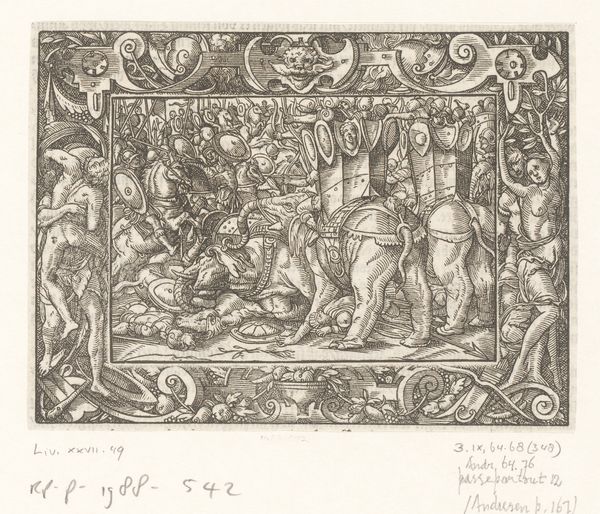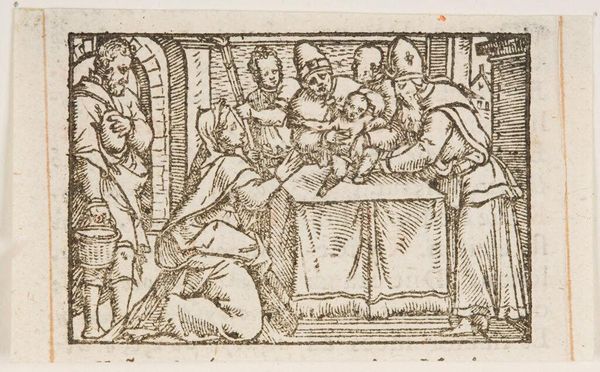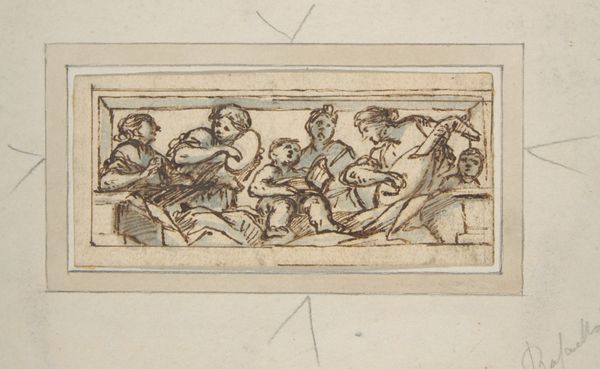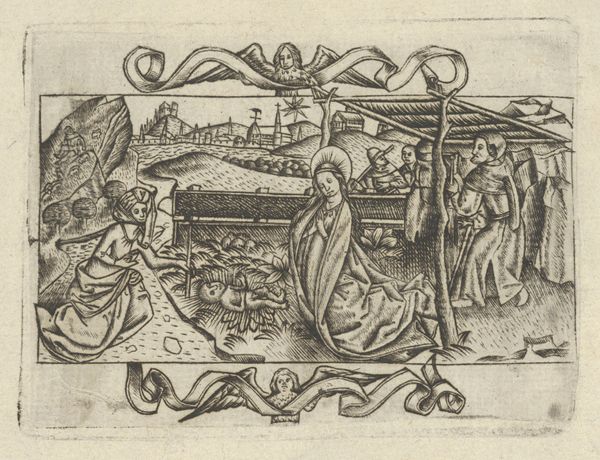
#
light pencil work
#
pen drawing
#
pen sketch
#
old engraving style
#
personal sketchbook
#
ink drawing experimentation
#
pen-ink sketch
#
ink colored
#
pen work
#
sketchbook drawing
Dimensions: height 29 mm, width 57 mm
Copyright: Rijks Museum: Open Domain
Editor: Here we have "Februari," an anonymous 17th-century piece, rendered in what looks like ink. It depicts a dining scene and has the feeling of a quick sketch capturing a larger, perhaps imagined event. What’s your take on this piece, considering its historical context? Curator: This piece intrigues me. The domestic scene—a meal, perhaps a celebration—immediately begs the question: who were these people? Not in the biographical sense, but what social class are they representing? Considering the likely social stratification of the 17th century, this could be a subtle commentary on social mobility or perhaps an idealized view of bourgeois life intended for a specific audience. How does the sketch's medium – simple ink – affect its perceived value or message? Editor: That’s fascinating! I hadn’t considered the social implications. I was mainly focused on the intimate feel of it. I guess because it felt so sketchy, it never read as some official kind of representation, or aimed at a large audience. Now that you mention social mobility I wonder about its role! What kind of settings did such scenes become accessible in during that time? Curator: Precisely! By the 17th century, prints and sketches, though not necessarily “accessible” to everyone, were circulating amongst a growing middle class, often depicting moral tales or satirical commentaries on the aristocracy. Did the growing availability of art serve as a new form of social capital? Was owning and discussing art – like this intimate dining scene - a way of performing cultural literacy and upward mobility? It’s this social and institutional framing that I find most compelling. Editor: Wow, I'm definitely seeing it in a new light. Considering the rise of the middle class and increased access to art, I suppose this could have played many roles from political critique, instructional imagery, and demonstration of knowledge all in a single, small work. Curator: Exactly! These layered possibilities, shaped by socio-political contexts, are what make even simple sketches so engaging. It prompts us to rethink our assumptions about accessibility and cultural representation. Editor: I'll never look at old sketches the same way again! This makes me think more deeply about how historical conditions shape both production and meaning. Thanks!
Comments
No comments
Be the first to comment and join the conversation on the ultimate creative platform.
